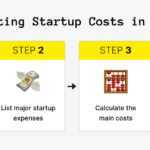In the food industry, developing a robust investment and growth strategy is essential for sustaining long-term success and competitiveness. As food businesses navigate the complexities of market dynamics, consumer preferences, and operational challenges, a well-crafted investment and growth strategy provides a roadmap for expansion, innovation, and financial stability. This section explores key elements of investment and growth strategies, offering insights on how food businesses can plan and execute effective strategies for sustainable growth.
1. Understanding Investment in Food Businesses
1.1 The Role of Investment
Investment in a food business encompasses financial resources allocated to various areas with the aim of enhancing operational capacity, improving product offerings, and expanding market reach. The primary objectives of investment include:
- Operational Efficiency: Upgrading equipment, optimizing processes, and enhancing facilities to improve operational efficiency and reduce costs.
- Product Development: Investing in research and development (R&D) to create new products or improve existing ones, catering to evolving consumer preferences and dietary trends.
- Market Expansion: Funding initiatives to enter new markets, whether geographically or through new sales channels, such as online platforms or retail partnerships.
1.2 Types of Investment
a. Capital Expenditure
Capital expenditure (CapEx) involves investing in long-term assets that enhance the business’s infrastructure and capabilities:
- Equipment: Purchasing new kitchen equipment, production machinery, or technology systems to improve efficiency and product quality.
- Facilities: Investing in facility upgrades, such as renovations, expansions, or new locations, to accommodate growth and enhance the customer experience.
b. Research and Development
R&D investments focus on innovation and product development:
- New Product Development: Funding research to develop new food products, recipes, or packaging solutions that meet market demands and regulatory standards.
- Quality Improvement: Investing in research to improve product quality, safety, and shelf life, ensuring compliance with industry standards and consumer expectations.
c. Marketing and Branding
Investment in marketing and branding helps build brand awareness and drive sales:
- Advertising: Allocating funds to digital marketing campaigns, social media promotions, and traditional advertising methods to reach target audiences.
- Brand Development: Investing in brand identity, including logo design, packaging, and promotional materials, to differentiate the business in a competitive market.
d. Technology and Innovation
Technology investments enhance operational efficiency and customer engagement:
- Automation: Implementing automation solutions for production, inventory management, and customer service to streamline operations and reduce labor costs.
- Data Analytics: Investing in data analytics tools to gather insights on customer preferences, sales trends, and operational performance, enabling informed decision-making.
2. Developing a Growth Strategy
2.1 Setting Growth Objectives
A clear growth strategy begins with defining specific growth objectives aligned with the business’s vision and mission:
- Revenue Growth: Setting targets for increasing sales revenue through market expansion, new product launches, or pricing strategies.
- Market Penetration: Aiming to capture a larger share of the existing market by enhancing product offerings, improving customer service, or expanding distribution channels.
- Geographic Expansion: Identifying opportunities to enter new geographic markets, either domestically or internationally, to reach new customer segments.
2.2 Analyzing Market Opportunities
Effective growth strategies are based on thorough market analysis:
- Market Research: Conducting market research to identify trends, consumer preferences, and competitive dynamics. This includes analyzing market size, growth potential, and customer demographics.
- Competitive Analysis: Assessing the competitive landscape to understand the strengths, weaknesses, and strategies of key competitors. Identify opportunities for differentiation and competitive advantage.
2.3 Strategic Planning
Strategic planning involves creating a detailed roadmap for achieving growth objectives:
- Business Model Innovation: Exploring new business models, such as subscription services, online delivery, or direct-to-consumer sales, to adapt to changing market conditions and consumer behaviors.
- Partnerships and Alliances: Forming strategic partnerships with suppliers, distributors, or other businesses to enhance market reach, share resources, or co-develop products.
2.4 Implementing Growth Initiatives
Successful implementation of growth initiatives requires careful planning and execution:
- Resource Allocation: Allocating resources, including financial, human, and technological, to support growth initiatives. Ensure that sufficient resources are available to execute the strategy effectively.
- Performance Metrics: Establishing key performance indicators (KPIs) to measure the success of growth initiatives. Monitor progress regularly and make adjustments as needed to stay on track.
2.5 Managing Risks and Challenges
Growth strategies come with inherent risks and challenges that need to be managed proactively:
- Operational Risks: Addressing potential operational challenges, such as supply chain disruptions, capacity constraints, or quality control issues, that may impact growth efforts.
- Financial Risks: Managing financial risks, such as cash flow fluctuations, funding shortages, or cost overruns, that may affect the ability to invest in growth initiatives.
- Regulatory Risks: Navigating regulatory requirements and compliance issues related to product development, marketing, and market entry, ensuring adherence to relevant laws and standards.
3. Securing Investment
3.1 Funding Sources
Identifying and securing funding sources is critical for supporting growth initiatives:
- Equity Financing: Raising capital through equity financing by offering shares of the business to investors. This may include venture capital, angel investors, or private equity.
- Debt Financing: Obtaining loans or credit from financial institutions to fund growth initiatives. Ensure that the terms and conditions of the debt align with the business’s financial capacity and growth plans.
- Grants and Incentives: Exploring grants, subsidies, or incentives offered by government agencies or industry organizations to support growth and innovation.
3.2 Pitching to Investors
Creating a compelling pitch is essential for attracting investors:
- Business Plan: Presenting a comprehensive business plan that outlines the growth strategy, financial projections, and investment requirements.
- Value Proposition: Highlighting the unique value proposition of the business, including competitive advantages, market opportunities, and potential returns on investment.
- Track Record: Demonstrating a track record of success, including previous achievements, financial performance, and operational milestones.
4. Monitoring and Adjusting the Growth Strategy
4.1 Regular Review
Regularly reviewing and adjusting the growth strategy is crucial for staying aligned with business goals and market conditions:
- Performance Analysis: Analyzing performance metrics and financial results to evaluate the effectiveness of growth initiatives. Identify areas for improvement and opportunities for further growth.
- Market Trends: Staying informed about market trends and consumer preferences to adapt the strategy as needed. Be responsive to changes in the market and adjust the approach to capitalize on emerging opportunities.
4.2 Flexibility and Adaptability
Maintaining flexibility and adaptability in the growth strategy allows the business to respond to unforeseen challenges and opportunities:
- Scenario Planning: Developing contingency plans for different scenarios, such as economic downturns, supply chain disruptions, or changes in consumer behavior.
- Continuous Improvement: Embracing a culture of continuous improvement, where feedback is used to refine processes, products, and strategies for ongoing success.
Conclusion
An effective investment and growth strategy is vital for the long-term success and sustainability of food businesses. By understanding the role of investment, setting clear growth objectives, analyzing market opportunities, and securing appropriate funding, businesses can position themselves for successful expansion and innovation. Ongoing monitoring, risk management, and adaptability are key to navigating the complexities of growth and achieving financial stability. With a well-crafted strategy and a proactive approach, food businesses can drive growth, enhance their market presence, and achieve their long-term goals.



